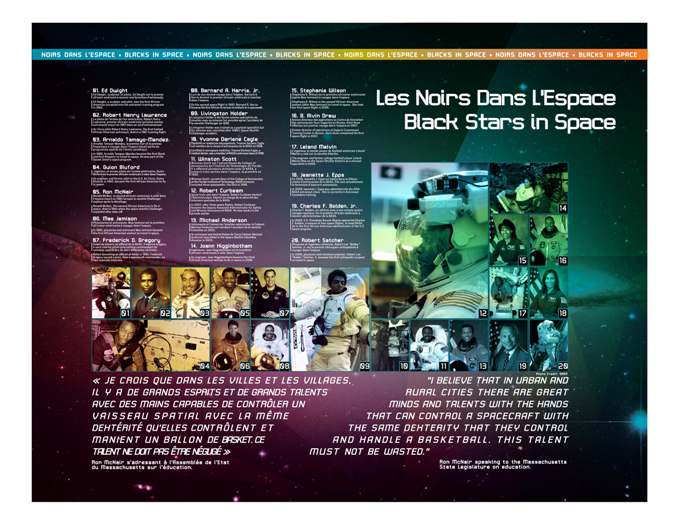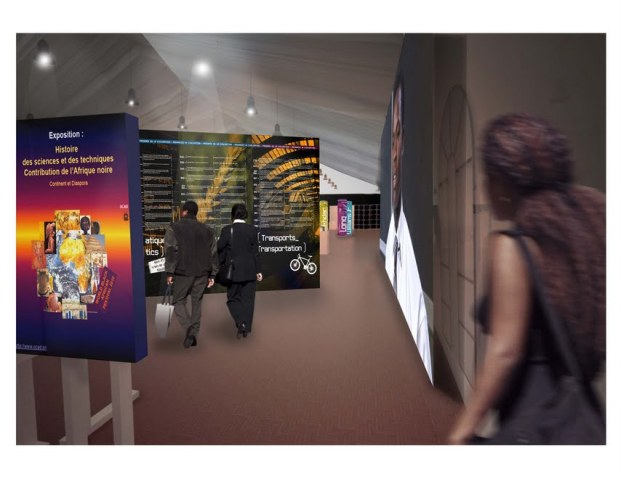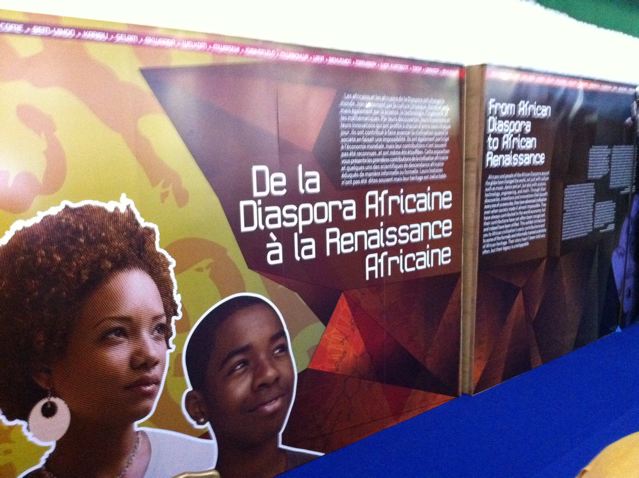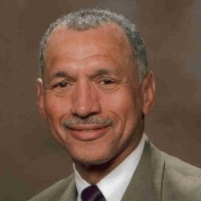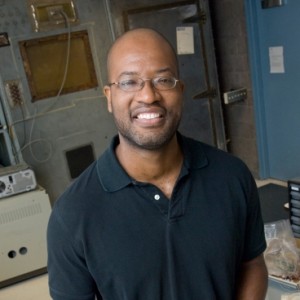RRTN Showcases Black Contributions to Science and Technology in Dakar, Senegal
Posted 13 years ago byIn December 2010, The Robert R. Taylor Network @ MIT showcased an interactive multimedia display it created at the Third Senegal World Arts festival in the West African country.
The World Festival Exhibit on Black Contribution to Science and Technology highlighted the contribution of Africans and the African Diaspora from ancient civilizations to the present. The exhibit took participants through a journey documenting how people of African descent have always contributed to our understanding of the world around us and the advancement of civilization through scientific discovery, technological innovation and invention. Black people have been part of the scientific community and continue to make significant contributions to the advancement of human knowledge and the global economy through invention and discovery for the betterment of mankind.
The exhibit began with the contributions of early African Civilization during the BC era to mathematics, science, systems and engineering, including present-day research from leading African research institutions.The exhibit then moved into an overview of contributions by black people to 10 key industries – Agriculture, Communications; Computing; Energy; Engineering and Materials; Environment; Mathematics; Medicine and Health; National Security; Space Exploration; and Transportation.
There was a special tribute to the black pioneers in space. The exhibit immersed festival-goers in a 25-column towering maze of pioneers of science from the AfricanDiaspora. A multimedia presentation of interviews and profiles of100 innovators engulfed the audience with the ideas young people have about science today: leaders in the fields of science and engineering, and the reality of the practioners. There was an engaging and interactivemultimedia timeline of black history in science and technology looking at inventions, inventors, and artists in the field with a linked Wiki-like encyclopedia. Individuals were able to add comments and content via their mobile phones, on-site computers and from anywhere with a web browser.
The exhibit was organized and curated by the RobertR. Taylor Network, Inc. at the Massachusetts Institute of Technology (MIT) in Cambridge, Massachusetts, USA in collaboration withProfessor Ahmadou Wague, University of Dakar, and CheikhM’backe Diop. To learn more about the exhibit, please visit www.adias.org
If you’re interested in booking the exhibit, contact RRTN @ info@rrtn.org.
Blacks in Space Wall
Graphic Artist’s Rendering of RRTN Display at Senegal World Arts Festival
25 Profiles of Black Trailblazers in Science and Technology
See more RRTN photos from the Senegal World festival.
Engineering the Future: MIT Alum Karl Reid Stands Up for Minority Students in Science and Technology
Posted 13 years ago byBy Tristen Graves, RRTN.org
By supporting minority students entering the fields of science, technology, engineering and math (STEM), Karl Reid finds a purpose that spurs his passion as well as bridges his backgrounds in engineering and education.
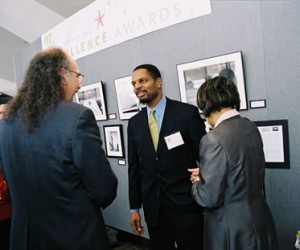
Engineer and educator Karl Reid is vice president of academic programs and strategic initiatives at the United Negro College Fund. Courtesy of MIT News Office
The Vice President of Academic Programs and Strategic Initiatives at the United Negro College Fund (UNCF), Reid is responsible for over 400 hundred scholarship programs and seeks out new partnerships to aid in fulfilling the mission of getting more students into and through college.
“This is why I have been put on this earth — to be that spokesperson for young people to get into these fields and become thriving leaders,” says Reid who earned a B.S. and M.S. in Engineering from MIT before pursuing a PhD at Harvard’s Graduate School of Education.
Even though his job comes with its share of rewards, Reid describes the challenges ahead in educating African-American youth as “daunting,” especially when he looks at the metrics.
“We have a statistic at UNCF that points out that of the three million African-American children under five, only 378,000 – 12 percent – will graduate from college,” Reid points out. “The challenge is the scale of the problem and seeing how many young people fall out of the education pipeline. It’s a daunting problem that we’ve got to resolve in order for the United States to meet President Obama’s goal of world leadership in the proportion of college graduates by 2020.”
Before working with UNCF, Reid held several titles at MIT where he received both his undergraduate and grad degrees in 1984 and 1985 consecutively. One of those appointments included directing the Minority Introduction to Engineering and Science program (MITES) from 1998-2005, while serving as the Executive Director of Engineering Outreach Programs (EOP).
“I thought it was the most fulfilling job I ever had in my 26 years of work,” Reid said. “I came back [to MIT] and took a pay cut because of its mission. It was a mission that I believed passionately about, which is to increase access and opportunities for underrepresented students, particularly as we began to shift to low-income, first-generation students.”
The MITES program was launched in 1975 by the School of Engineering at MIT. It is a six-week summer program for minority high school students seeking to pursue advanced technical degrees and careers. “MITES provides a personal contact and a personal opportunity to speak into the lives of these young people and let them know that, ‘I can do this; I can be successful in that field,” Reid said. “And they understand that intellectually they can do the work; they understand that socially there are others like them that can do the work.”
In addition to running MITES, from 2005-2008, Reid also served as the Associate Dean of Undergraduate Education, Director of the Office of Minority Education and the Assistant to the Chancellor at MIT. Reid also took part in establishing the Saturday Engineering Enrichment and Discovery (SEED) Academy for 160 Boston area high school and middle school students. For Reid, it was in 1982 during his sophomore year at MIT that he discovered his passion for minority education. While leading a committee within his chapter of the National Society of Black Engineers, Reid had the responsibility of starting a program called the Ambassador Program which introduced junior and high school students to the field of engineering. Dr. William McLaurin, Director of the Office of Minority Education at the time and mentor, helped Reid co-write a proposal to the Arthur D. Little Company to raise $5,000 to fund the program which was launched in 1983.
Video: MITES Summer Program 2007
“We had dozens of young people come to campus and attend classes and participate in engineering and design contests. That’s when I got my feet wet. So I’ve had this mission and passion for almost 30 years,” Reid said. In 2008, Reid began working for UNCF. He is responsible for its research unit and capacity building for its 38-member historically black colleges and universities (HBCUs). He manages a staff of over 30 people and helps to create programs that provide access.
Before the UNCF, Reid worked 12 years in the computer industry in product management, including six years with IBM where he won several regional and branch awards. He credits his father for sparking his interest in engineering and motivating his career. “He had an engineering mind.
“I wanted to take what my father did for me to the masses,” Reid says of his dad.
Reid says when he isn’t working, spending time with his family accounts for most of his time. For 24 years now, he has been married to Dr. Andrea Reid, a gastroenterologist at the V.A. Medical Center. They have three children, Jasmine, Andrew and Miles. Reid also enjoys running and cycling and is heavily involved in creating a Christian education program at his church, Reid Temple A.M.E. Church in Maryland.
He currently resides in Washington D.C.
Get Involved: Contribute to the UNCF Scholarship Fund
More MIT Professor Profiles
Meet MIT Chemical Engineering Professor Kristala Jones-Prather
White House Blog – Charles Bolden
Posted 13 years ago byCharles Bolden’s Story: “From the Segregated South to Low Earth Orbit”
Posted by Charles Bolden on February 06, 2011
White House Blog
Ed. note: This post is part of the Celebrating Black History Month series that highlights the contributions of African Americans who are contributing to the President’s vision of winning the future though their work.
It’s a long way from the segregated south to low Earth orbit. But I am fortunate to have made the journey and to have had many opportunities to serve my nation in a 34-year career with the U.S. Marine Corps and in many roles at NASA, currently as head of the nation’s space program.
Read More:
http://www.whitehouse.gov/blog/2011/02/06/charles-boldens-story-segregated-south-low-earth-orbit



